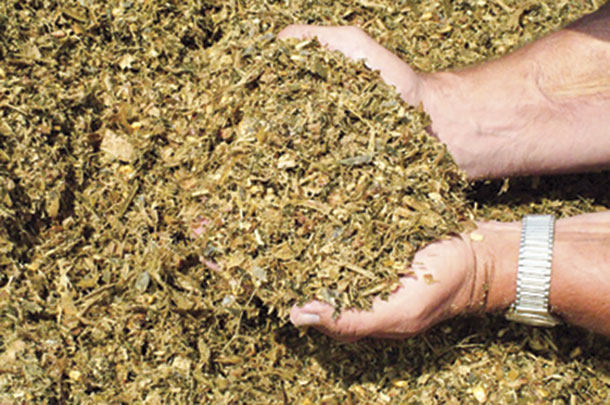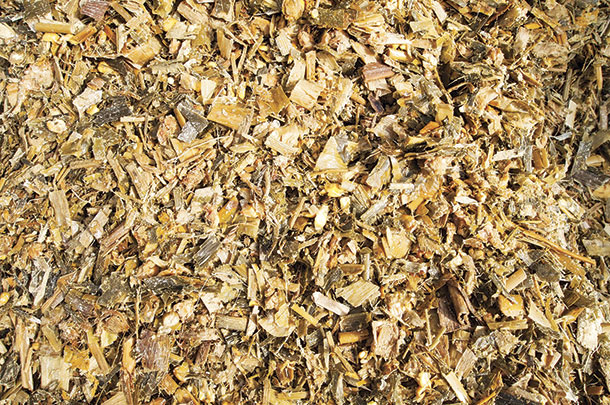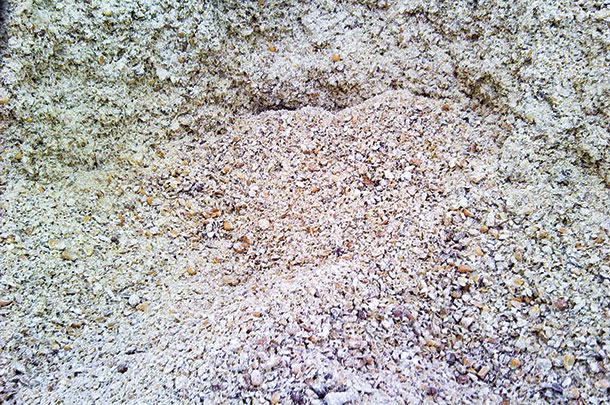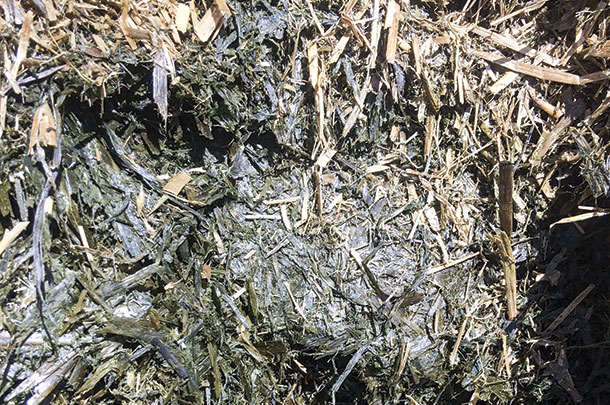Silages treated with inoculants containing Lactobacillus buchneri will have a characteristic acetic acid aroma but will still be high-quality.
Any other distinct smell should be an indication to evaluate the silage by sending a sample for analysis, especially if you are noticing fertility and production issues from your herd. ![]()

Nail polish
Nail polish smells are strongly correlated to levels of ethyl ester compounds. The odor has been linked to drops in feed intake and milk yield by dairy cows.

Musty or moldy
Moldy or musty smells may be accompanied by visible mold growth. Moldy silage has already experienced significant losses and should be discarded as mycotoxins may be present, which can produce health, fertility and production issues.

Vinegar
Vinegar smells (and an accompanying yellowish color) are caused by high concentrations of acetic acid. A sample should be sent for analysis to check the fermentation acid profile. The lactic-to-acetic acid ratio profile will indicate whether it will feed well and be aerobically stable, or whether it is unstable and may cause a drop in feed intake.

Tobacco, burnt
Tobacco smells and brownish coloring are caused by heating. The early stages (i.e., sweet tobacco smells) are of less concern. Analyses can provide the levels of unavailable protein to guide dietary adjustments.

Sweet, fruity
Sweet or fruity smells usually mean high alcohol (ethanol) concentrations. Sweet or fruity-smelling silages can be quite unstable at feedout due to yeast growth, which can lead to significant losses of dry matter, energy and nutrients.

Earthy
Earthy smells occur in silage as a sign of bacillus growth and likely a high pH. Silage with an earthy smell should be discarded, as most nutritional value has been lost and may result in potential negative effects if fed.

Putrid and fishy
Putrid and fishy smells are associated with clostridia and the silage has a slimy, dark green to black appearance. Clostridial silages should not be fed to pre-fresh and post-fresh cows and, for other animals, no more than 50 g of butyric acid per day should be consumed; it has low energy level and high soluble protein, and feed intake will be low. ![]()
PHOTOS: Photos courtesy of Lallemand Animal Nutrition.
For a more complete discussion of problem silage smells, go to Use your senses to evaluate silage.








